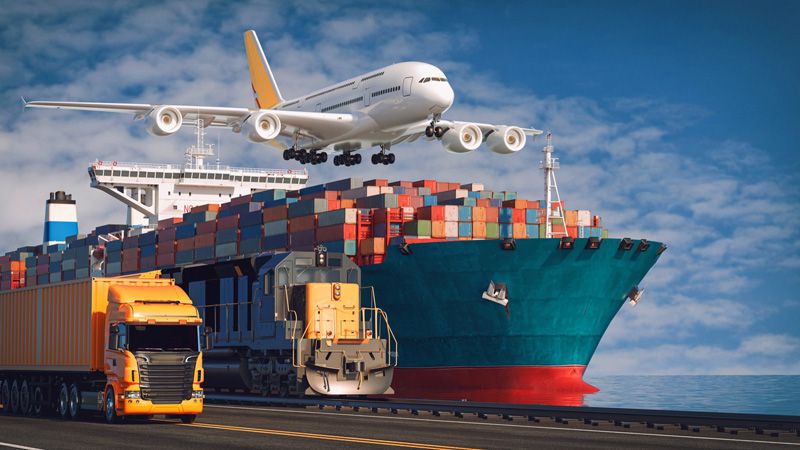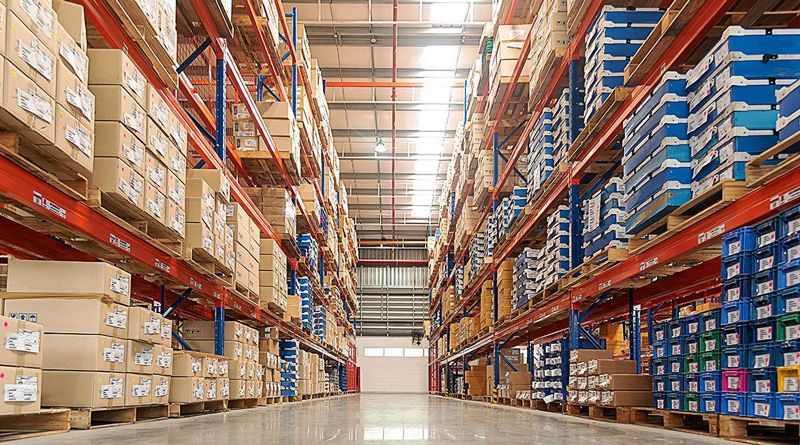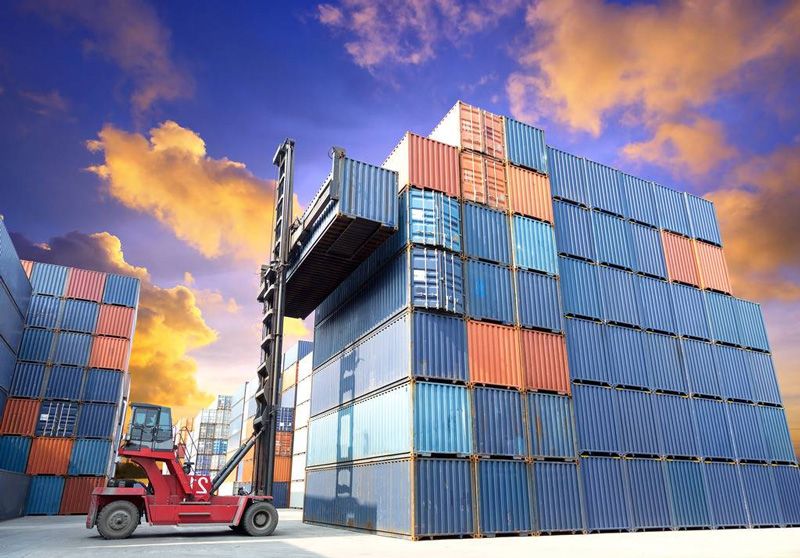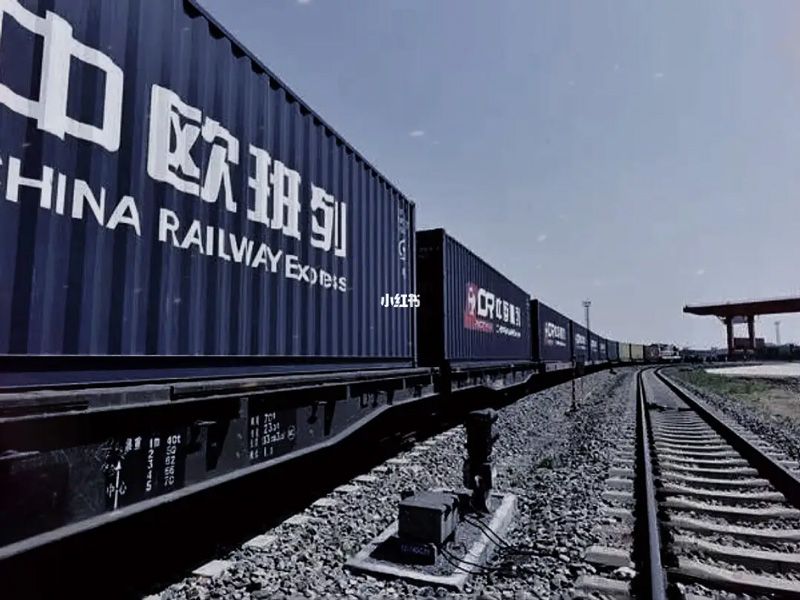-
Company Dynamics

2024-01-10
The 7th anniversary team building activity of Zhejiang Zhenchen Supply Chain Management Co., Ltd. has been successfully concludedZhejiang Zhenchen Supply Chain Management Co., Ltd. recently celebrated its seventh anniversary. In order to thank everyone for their hard work and support over the long term, the company specially organized a colorful team building activity. Through this activity, communication and interaction between employees were deepened, team cohesion was enhanced, and physical and mental relaxation was also achieved, resulting in many beautiful memories.The location for this team building activity was chosen in the beautiful natural scenery. We went to Tashi Township in Jinhua City to avoid the high temperature. We had authentic farmhouse dishes here and went fishing and swimming in the river. On this hot summer day, the clear stream brings us a hint of coolness and excitement, and also makes us more united.
Detail >
-
Company Dynamics

2024-01-10
What is a logistics management system? What are the functions of a logistics management systemThe domestic logistics industry is developing rapidly, and traditional human resource management can no longer keep up with the trend of the times. In the logistics industry, more and more logistics companies are using logistics management systems to strengthen the management of each link in the logistics transportation process and improve logistics transportation efficiency. The latest logistics management system can indeed bring many convenient conditions to the development of enterprises. So what are the functions of the logistics management system? There are still many people who are not familiar with it. Below is a brief introduction for everyone.What does a logistics management system doThe logistics management system is mainly designed to meet the daily office and project management needs of logistics companies, assist staff in daily logistics and personnel management, improve management efficiency, reduce operating costs, and enhance the long-term competitiveness of enterprises. Through this system, logistics company transportation management personnel can achieve dynamic management of fleets and vehicles; Dispatchers can keep track of vehicle movements and usage at any time; The carrier salesperson is able to issue and accept carrier bills; Financial personnel can also calculate transportation costs through this system.What are the components of a logistics management systemThe management of logistics information, warehouse storage operations, and road transportation are all important components of logistics management systems, and they are indispensable. In addition, human resources are also an important part of logistics management systems, which can effectively utilize talents while saving manpower and costs, making it a great advantage of logistics management systems. The logistics management system also has the ability of financial management, which is managed using computer and other network technologies. The arrangement is more reasonable, and the calculation of related data will be more accurate. The logistics management system reasonably integrates many important links in logistics operations, making logistics transportation more transparent, fast, and real-time. When the public sends and receives parcels on a daily basis, what they can see is real-time logistics tracking data, which is thanks to the logistics management system.What functions does the logistics management system have1. Transportation functionTransportation is one of the core businesses of logistics and an important function of logistics systems. When deciding on transportation methods, it is necessary to balance the transportation services required by the transportation system and transportation costs. The service characteristics of transportation can be used as the basis for judgment: freight, transportation time, frequency, transportation capacity, safety of goods, accuracy of time, applicability, scalability, etc.2. Storage functionIn logistics systems, warehousing and transportation are equally important constituent factors. The warehousing function includes a series of activities such as stacking, managing, storing, maintaining, and maintaining the goods entering the logistics system. The role of warehousing is mainly manifested in two aspects: first, to ensure the good use value of the goods; The second is the preservation carried out to deliver goods to users and carry out necessary processing activities in the logistics center.3. Packaging functionIn order to ensure that the goods in the logistics process are delivered to users in good condition and meet the requirements of users and service recipients, it is necessary to package most goods in different ways and to varying degrees. The function of packaging is reflected in several aspects, including product protection, standardization, convenience, and product advertising. The first three belong to logistics functions, and the last one belongs to marketing functions.4. Loading and unloading handling functionsLoading, unloading, and handling are necessary logistics activities that arise with transportation and storage. They are intermediate links that connect logistics activities such as transportation, storage, packaging, and circulation processing, as well as loading and unloading activities carried out for inspection, maintenance, and upkeep in storage and other activities. The management of loading and unloading mainly involves the selection and rational configuration and use of loading and unloading methods, loading and unloading machinery and equipment, as well as the rationalization of loading and unloading, in order to minimize the frequency of loading and unloading, save logistics costs, and achieve good economic benefits.5. Processing functionThe circulation processing function is the function of processing goods in order to promote product sales, maintain product quality, and achieve logistics efficiency during the flow of goods from the production field to the consumption field, causing physical or chemical changes in the goods.6. Delivery functionThe delivery function can be set up in the form of centralized inventory and joint distribution by the logistics center, allowing users or service objects to achieve zero inventory and rely on timely delivery by the logistics center, without the need to maintain their own inventory or only maintain a small amount of insurance reserves, reducing the investment of logistics costs. Delivery is one of the most important features of modern logistics.
Detail >
-
Company Dynamics

2024-01-10
The composition structure of warehousing logistics equipment, advantages and disadvantages of warehousing logisticsWith the development of logistics towards supply chain management, enterprises are increasingly emphasizing the unique role of warehousing as a resource provider in the supply chain. Warehouses are gradually transforming into distribution centers, which is known as warehousing logistics. Warehouse logistics, warehouse logistics equipment mainly includes three-dimensional storage equipment, sorting systems, lifting equipment, etc., which can form automated and mechanized warehouses to stack, store, and sort items. Warehouse logistics can fully utilize space and reduce labor costs, but its drawbacks are also obvious: high investment requirements, long construction cycles, and lack of flexibility. Let's take a look at warehousing logistics below!1、 What is warehousing logisticsWarehouse logistics refers to the use of self built or leased warehouses, venues, storage, storage, loading and unloading, transportation, and distribution of goods. The traditional definition of warehousing is given from the perspective of material reserves. Modern "warehousing" is not traditional "warehouse" or "warehouse management", but rather warehousing in the context of economic globalization and supply chain integration, and is the warehousing in modern logistics systems.2、 Equipment composition of warehousing and logistics equipment1. Stereoscopic storage equipmentBy utilizing automated three-dimensional warehousing equipment, it is possible to achieve high-level rationalization, automated access, and simplified management of the warehouse. Its functions can be summarized as:(1) High rise shelf storage. Save land and make full use of warehouse space to increase storage capacity.(2) Automatic access. Improve the efficiency of inbound and outbound operations, liberate manpower through mechanical automation, and reduce labor intensity.(3) Computer control. Automatically store and manage information accurately, and print various reports automatically.(4) It can be used in conjunction with other conveying equipment to link production, warehouse, and logistics as a whole, reducing management costs.2. Sorting systemThe sorting system adopts a centralized management and decentralized control management mode, which combines hardware and software modules such as sensors, PLCs, computers, networks, and electronic sorting to meet the process and management requirements of the sorting system. The overall task of the system is:(1) Implement information exchange between control systems and information management systems.(2) The sorting process is highly automated.(3) Realize a highly coordinated operation between the sorting process and the stocking system.(4) Realize real-time monitoring of the entire equipment operation process.(5) Implement sorting control with a daily processing volume of ≥ 8000 orders.(6) Realize automatic replenishment according to sorting requirements.(7) Implement system protection of existing data in case of abnormal shutdown; When returning to normal, it can continue to operate in its original state.3. Lifting equipmentLifting equipment, also known as elevators, hoists, or elevators, is a form of vertical reciprocating transportation that combines horizontal conveyors and vertical lifting equipment. It is a relatively advanced special mechanical equipment. Its working principle is to use the up and down reciprocating motion of the lifting platform to achieve vertical conveying of materials, and different types of conveying equipment can be installed on the lifting platform, which is coordinated with the inlet and outlet conveying equipment to fully automate the conveying process. The up and down processes of the lifting platform can transport materials, and during one cycle of the lifting platform, the materials can flow in both directions simultaneously.3、 The advantages of warehousing logistics1. Adopting automated three-dimensional warehouses to fully utilize spaceAutomated three-dimensional warehouses are an important component of modern warehousing, using a multi-level elevated warehouse system for storing goods, with a height of over 30 meters. Different types of elevated warehouses can be set according to needs: high-rise (greater than 12 meters), middle (5-12 meters), and low (less than 5 meters). This can save nearly 70% of the land area compared to flat storage.2. Realize mechanization and automation to improve warehouse management levelThe automated three-dimensional warehouse system consists of shelves, stackers, inbound and outbound conveyors, automatic control systems, and management information systems. It can automatically complete the storage and retrieval of goods according to instructions, and automatically manage the goods in the warehouse, making material handling and warehousing more reasonable. Due to the use of shelves for storage and combined with computer management, it is easy to implement the principle of first in, first out, and new storage to prevent the occurrence of natural aging, deterioration, rust, and other phenomena of goods.3. Reduce reliance on labor demandEspecially in reducing the cost of human resources in special storage environments, due to the adoption of automation technology, automated storage can adapt to the needs of special occasions such as darkness, toxicity, and low temperatures.4、 Disadvantages of warehousing logistics1. Large investment and long construction periodThe main body of automated warehousing is composed of automated warehouses. The basic components of an automated warehouse include buildings, shelves, tally areas, management areas, stacking machinery, supporting machinery, related management systems, and information systems. These hardware and software require high investment and installation and construction costs. The construction project of an automated warehouse needs to be evaluated and designed, including necessity assessment, technical assessment, system development, and sensitivity analysis. This requires an analysis of factors such as warehouse throughput, storage capacity, and category of ordered goods in the past and future 3-5 years, as well as performance evaluation and selection of equipment, all of which require a long time cycle and significant investment in manpower, material resources, and time.2. Fixed material throughput and types, lacking flexibilityAfter an automated warehouse is built according to the plan, the type of warehouse, material throughput, and warehouse capacity are fixed. If external factors suddenly change, the warehouse does not have strong adaptability and change ability, which is a lack of elasticity.
Detail >
-
Company Dynamics

2024-01-10
What is supply chain management? What are the contents of supply chain managementSupply chain management is a management method that manages the entire supply chain system. The implementation of supply chain management is to shorten cash turnover time, reduce risks faced by enterprises, achieve profit growth, and provide predictable income. The main content of supply chain management is divided into five parts: planning, procurement, manufacturing, distribution, and returns. In the management process, attention should be paid to emphasizing core competitiveness, external use of resources, and cooperative competition. Let's learn about what supply chain management is and what it includes.1、 What is Supply Chain ManagementSupply chain management refers to the management method of effectively organizing suppliers, manufacturers, warehouses, distribution centers, and distributors together to manufacture, transport, distribute, and sell products in order to minimize the cost of the entire supply chain system while meeting a certain level of customer service.Supply chain management is the coordination of internal and external resources within a company to jointly meet consumer needs. When we view each link in the supply chain as a virtual enterprise alliance, and view any enterprise as a department within this virtual enterprise alliance, the internal management of the alliance is supply chain management. The composition of the alliance is dynamic and constantly changing according to market needs.For the entire supply chain system, implementing supply chain management is mainly to shorten cash turnover time, reduce risks faced by enterprises, achieve profit growth, and provide predictable income.2、 What does supply chain management includeThe content of supply chain management mainly includes five parts:1. PlanThis is the strategic part of supply chain management. You need a strategy to manage all resources to meet the needs of customers for your product. A good plan is to establish a series of methods to monitor the supply chain, so that it can effectively and low-cost deliver high-quality and high-value products or services to customers.2. ProcurementChoose suppliers who can provide goods and services for your products and services, establish a pricing, distribution, and payment process with suppliers, and create methods to monitor and improve management. Integrate the management process of goods and services provided by suppliers, including picking up, verifying delivery notes, forwarding goods to your manufacturing department, and approving payment to suppliers.3. ManufacturingThe activities required for production, testing, packaging, and preparation for delivery are the most measured aspects of the supply chain, including quality level, product output, and worker productivity.4. DeliveryAlso known as logistics, it involves adjusting user order receipts, establishing warehouse networks, dispatching delivery personnel to pick up and deliver goods to customers, establishing a pricing system for goods, and receiving payments.5. ReturnsThis is the problem handling section in the supply chain. Establish a network to receive defective and excess products returned by customers, and provide support when problems arise with customer application products.3、 What is the core of supply chain management1. Emphasize core competitiveness and reflect "horizontal integration". To this end, it is necessary to clearly identify the core business of the enterprise, and then focus on core resources to improve core competitiveness.2. Outsourcing, also known as resource outsourcing, involves outsourcing non core businesses to business partners and forming strategic alliances with them.3. Collaborative competition, where past competitors form alliances with each other, jointly develop new technologies, and share achievements; Outsource non core components previously produced by our company to suppliers, and cooperate and participate in competition together.4. Service oriented management with customer satisfaction as the goal, for downstream enterprises, the function of upstream supply chain enterprises is not simply to provide materials, but to provide the best service at the lowest cost.5. The integration of logistics, information flow, capital flow, etc. emphasizes that these flows must be integrated. Only by achieving integration across enterprise processes can the goal of coordinated operation of supply chain enterprises be achieved.6. The use of information technology to achieve management goals is a prerequisite for information flow management.7. Pay more attention to the participation of logistics enterprises, and the role of logistics is particularly important because shortening the logistics cycle is more crucial than shortening the manufacturing cycle.
Detail >
-
Company Dynamics

2024-01-10
What is the relationship between logistics and supply chain management? What are the characteristics of supply chain logistics managementLogistics and supply chain management are often put together, with both differences and connections. In fact, supply chain management originated from logistics management, but its scope is broader and it is a higher stage of logistics development. Supply chain logistics management is a logistics management system centered on the core products or businesses of the supply chain, characterized by strong systematicity, close relationships between enterprises within the supply chain, and information sharing. Let's learn about the relationship between logistics and supply chain management together.1、 What is the relationship between logistics and supply chain managementThe emergence and development process of supply chain originates from the process of logistics management, but it cannot be simply equated with logistics management, let alone completely separate logistics management to study supply chain management. The logistics academic community generally treats supply chain as an advanced stage of logistics development.1. Logistics management has a narrower scope compared to supply chain managementLogistics management usually focuses on the business process of the enterprise itself, and supply chain management is no longer limited to internal management. Instead, it has shifted its management perspective to the procurement and sales process, and even established cooperative relationships with its customers, sharing all relevant elements with itself, thereby establishing an efficiency improvement system formed around common goals, and based on a series of effective overall management from the beginning to the end, Make the process more controlled.2. Supply chain management is a higher stage of logistics development, with higher goals than logistics managementThe main goal of logistics management is within the enterprise, and supply chain management has gone beyond the enterprise itself, emphasizing the achievement of goals and overall competitiveness improvement of all enterprises within the entire cooperation system and framework. Logistics management tends to reduce the logistics costs of the enterprise itself, while supply chain management is positioned to meet the needs of end customers. From this perspective, logistics management is an operational methodology, while supply chain management is a strategic worldview.2、 What is Supply Chain Logistics ManagementSupply chain logistics management refers to a logistics management system centered around the core products or business of the supply chain. The former mainly refers to the logistics management of the supply chain organized by the manufacturing, distribution, and raw material supply of core products, such as the logistics management of the automotive manufacturing, distribution, and raw material supply chain, which is a logistics management system centered on automotive products. The latter mainly refers to the logistics management of the supply chain organized based on core logistics business, such as third-party logistics, distribution, warehousing, or transportation supply chain logistics management.The logistics management of the supply chain is the core of supply chain management, and the flow of funds serves logistics and creates conditions to ensure the smooth progress of logistics.3、 What are the characteristics of supply chain logistics managementSupply chain logistics management differs from general logistics management in that its main characteristics include:1. Supply chain logistics is a systematic logistics, and it is also a large-scale system logistics. This system involves various enterprises in the supply chain system, and these enterprises are of different types and levels, including upstream raw material supply enterprises, downstream distribution enterprises, and core enterprises, with different types of supply, production, and sales. These enterprises are both distinct and interconnected, together forming a supply chain system. This large system logistics includes logistics between enterprises, but it may also include internal logistics, directly connected to the production system of the enterprise.2. Supply chain logistics is logistics centered around the core enterprise, which aims to organize the logistics activities of the entire supply chain from the perspective of serving the core enterprise. It is necessary to closely cooperate with the operation of the core enterprise and meet its needs.3. Supply chain logistics management should allocate resources on a broader scale, including fully utilizing various resources of various enterprises in the supply chain, in order to achieve more optimized supply chain logistics.4. Inter enterprise relationship: The characteristic that distinguishes supply chain enterprises from general enterprises is that they have a close partnership relationship of mutual trust, mutual support, symbiosis and mutual prosperity, and related interests. This favorable condition can be fully utilized when organizing logistics activities. Organize more effective logistics activities.5. Information sharing: The supply chain itself has the characteristic of information sharing, and supply chain enterprises usually establish computer information networks to transmit information to each other, achieving the sharing of sales information, inventory information, etc. When organizing logistics activities, this favorable condition can be fully utilized, providing strong support for logistics informatization and efficiency.
Detail >
Location:Home > News > Company Dynamics


